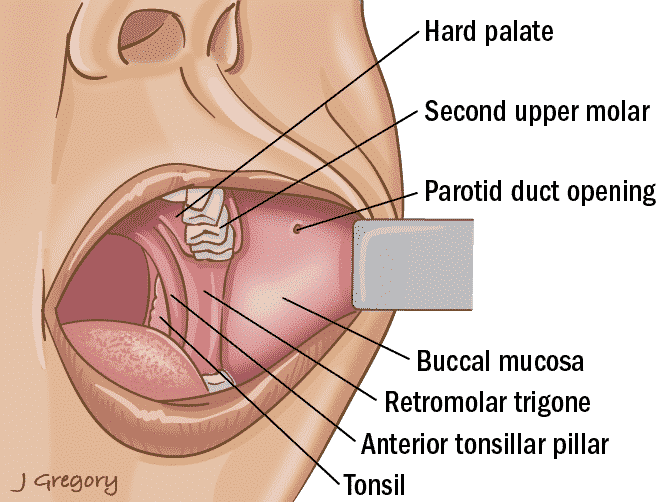The buccal region refers to the inner cheek, with the buccal mucosa being the lining of the inside of the cheek.
The buccal mucosa extends from the anterior tonsillar pillar at the back of the mouth, to the lining of the lips at the front of the mouth. A branch of the fifth cranial nerve, called the trigeminal nerve, provides feeling to this entire region of the mouth.
Buccal Mucosa
A small opening in the buccal mucosa on either side of the mouth represents the end of the small tube, called the parotid duct, that transports saliva from the parotid gland (link to salivary gland cancer/anatomy) into the mouth.
Underneath the buccal mucosa there are major and minor salivary glands (link to salivary gland cancer/anatomy), nerves, blood vessels, and small lymphatic channels. There are also many important muscles used for facial movement and chewing. The upper and lower jawbones are also located right at the border of the buccal region.
Because there are so many different structures in and around the buccal region, buccal cancer can cause various symptoms and can invade multiple different tissue types.













